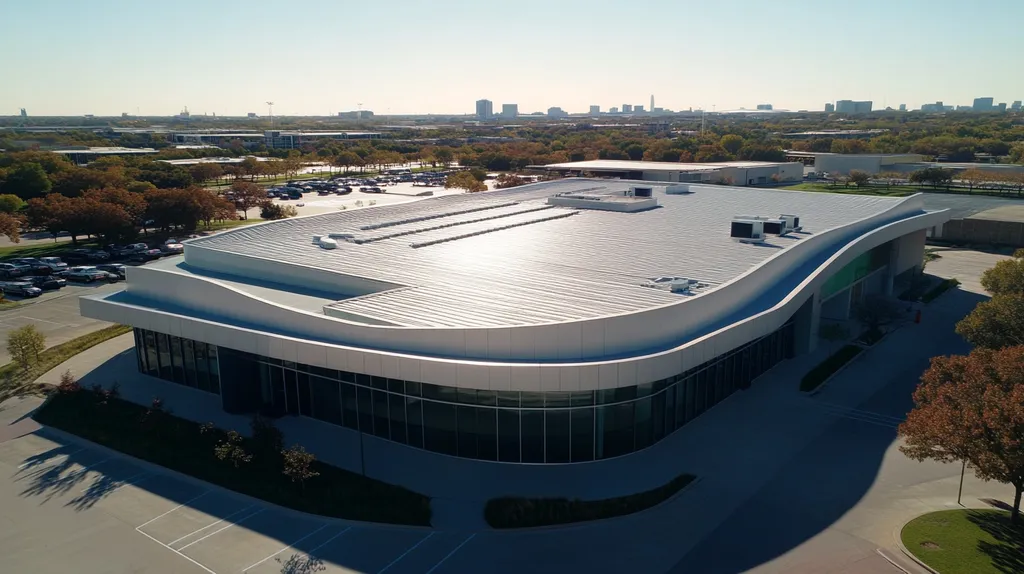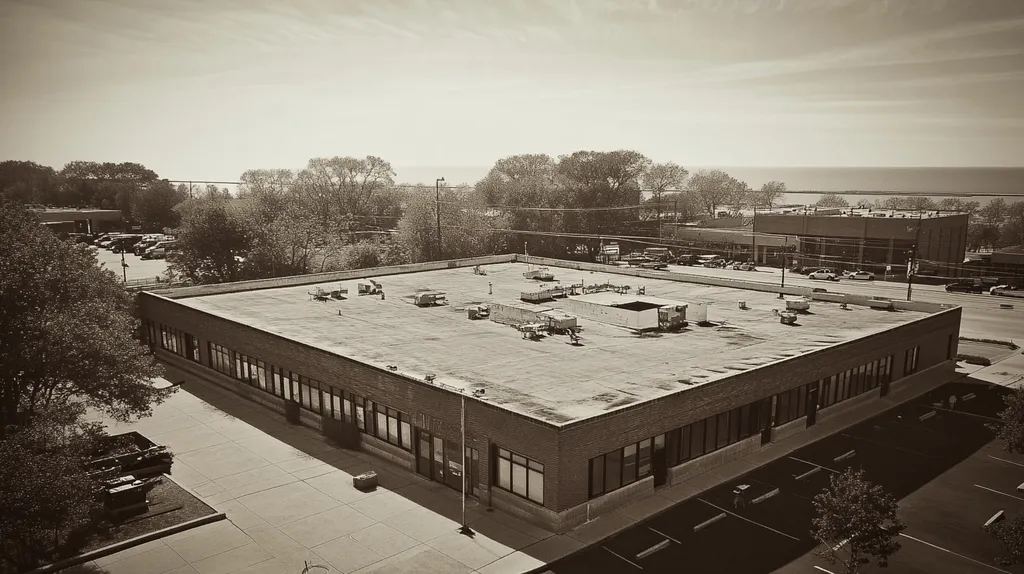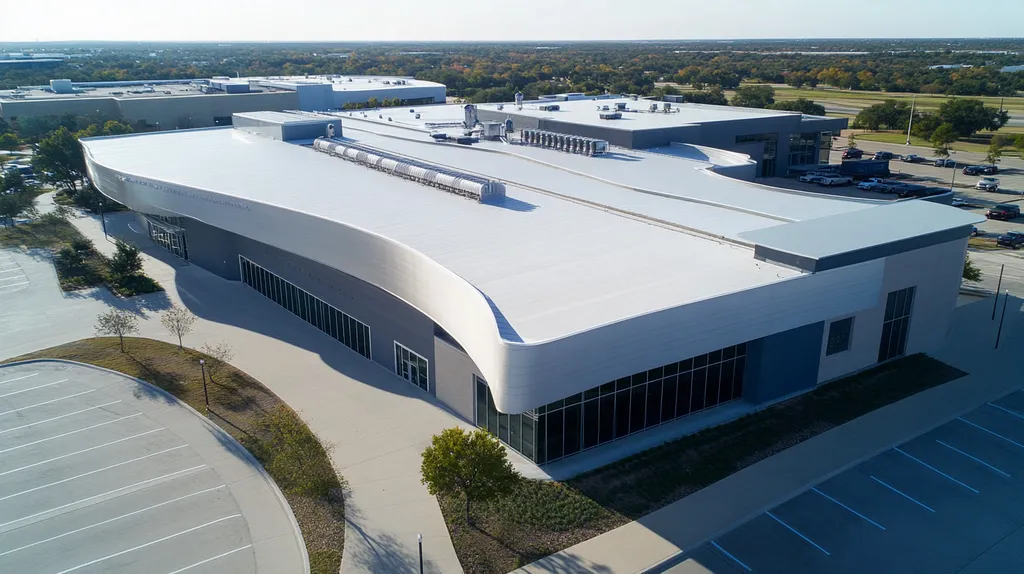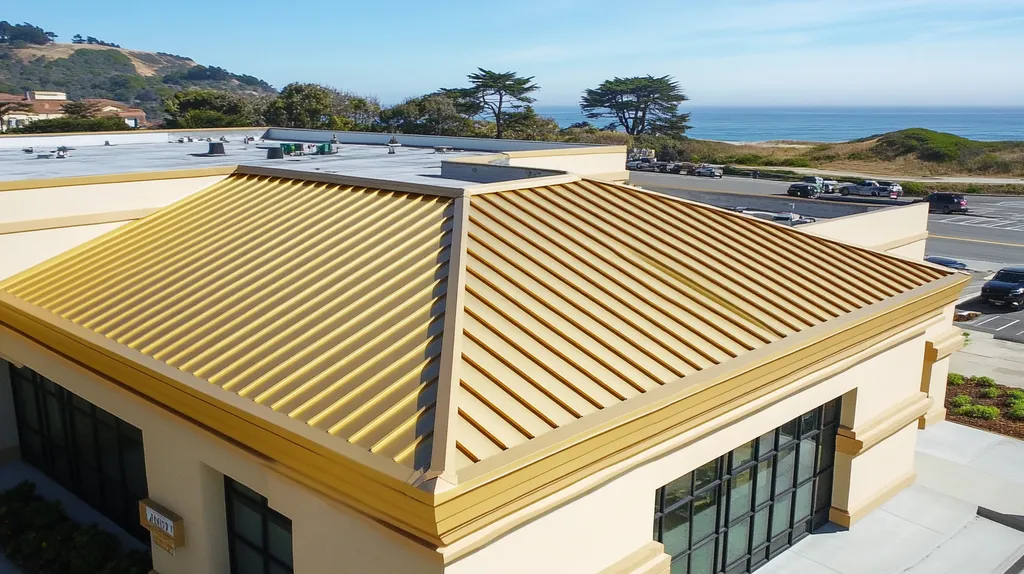In today’s industrial roofing sector, over 80% of catastrophic roof failures stem from improper installation by uncertified contractors, resulting in millions in damage annually.
For property professionals managing commercial and industrial facilities, navigating contractor certifications has become a critical challenge that directly impacts safety, compliance, and long-term operational costs.
This comprehensive guide examines the essential certification requirements, financial implications, and risk management strategies that facility managers must understand to protect their roofing investments and ensure reliable performance.
SECTION 1: PERFORMANCE FACTORS
When it comes to industrial roofing, understanding performance factors is crucial; the cost of a leaking roof can be astronomical, affecting both property and productivity. Research indicates that over 80% of roofing failures are due to installation mistakes, making contractor certifications a vital aspect for property owners seeking quality and dependability.
Contractor Certification Levels and Training Standards
For property professionals, recognizing contractor certification levels is key to ensuring quality roofing systems. Certifications provide a clear indicator of a contractor’s expertise and training in particular roofing methods. For example, contractors certified by reputable manufacturers have demonstrated essential skills in installing and maintaining roofing systems effectively.
Certifications vary from basic to advanced levels, with more rigorous programs demanding extensive training and successful completion of examinations. Understanding these levels enables property owners to make informed decisions when evaluating potential contractors.
Moreover, certification programs often emphasize ongoing education, helping contractors stay updated on the latest materials and installation techniques. This dedication to continual learning ensures that certified professionals can tackle modern roofing challenges with skill and effectiveness.
Key Action Items
Impact of Certification on Installation Quality
The quality of roofing installation is closely linked to the contractor’s certification status. Studies show that certified installers adhere more faithfully to manufacturers’ specifications, leading to fewer long-term issues. This adherence translates to lower repair costs and a longer lifespan for roofing systems.
Certified contractors benefit from exclusive training and support from manufacturers, enhancing their understanding of specific products and installation techniques. Facilities that opt for certified contractors report greater satisfaction regarding the durability and performance of their roofs.
Additionally, certified contractors are often well-versed in local building codes and regulations. This knowledge ensures that installations comply with legal and safety standards, minimizing risks and liabilities for property owners.
Key Action Items
Verification of Certified Contractor Performance
Verifying a contractor’s certification is essential for maintaining accountability. Property owners should request proof of certification and check its validity with relevant certifying organizations. This step guarantees that the contractor’s qualifications are up-to-date and legitimate.
In addition, independent reviews and testimonials can deeply enhance the verification process. Previous clients’ feedback provides valuable insights into a contractor’s reliability and performance. Many certified contractors also maintain portfolios showcasing their past projects, which can further assist in evaluating their capabilities.
Some certification programs also offer performance warranties or guarantees, adding an extra layer of security. These warranties often cover defects that may arise during installation, potentially saving property owners considerable costs in repairs.
Key Action Items
SECTION 2: FINANCIAL CONSIDERATIONS
In industrial roofing, the financial implications are paramount. Property owners who fail to hire certified contractors may quickly find themselves dealing with costly repairs and diminished property value. Research from the National Roofing Contractors Association shows that adherence to industry standards can significantly extend the lifespan and efficiency of roofing systems, ultimately leading to better financial returns. Recognizing these financial impacts is essential for making informed choices.
Cost Implications of Hiring Certified Contractors
Choosing certified contractors may result in higher initial costs, but this investment often leads to significant long-term savings. Certified professionals tend to utilize superior materials and employ best practices, thus reducing the likelihood of costly repairs. Research indicates that organizations that work with certified contractors typically save an average of 20% on repair expenses over a five-year period.
Furthermore, certified contractors are more likely to comply with safety standards, which decreases the risk of accident-related expenses and can lower insurance premiums. By investing in certified services, property owners position themselves for greater reliability and quality, which ultimately translates to financial benefits.
Conversely, opting for non-certified contractors may initially appear to save money, but this can lead to unexpected expenses. Poor installation can result in critical issues like leaks or structural damage, necessitating costly fixes that could have been easily avoided. By prioritizing certification, property owners can safeguard against these hidden financial pitfalls.
Key Action Items
Insurance and Warranty Benefits Linked to Certification
Insurance and warranty considerations play a pivotal role in the financial analysis of roofing projects. Certified contractors often provide more comprehensive warranties, ensuring protection against defects in both workmanship and materials. For instance, some manufacturers offer warranties of up to 20 years for roofing systems installed by certified professionals, compared to shorter coverage for non-certified installations.
Furthermore, insurance providers value certified contractors, which can lead to reduced premium rates. By hiring certified professionals, property managers can showcase their commitment to quality, potentially earning discounts on liability and property insurance premiums.
This relationship between certification and improved warranty conditions creates valuable financial security. If issues arise, having documented proof of certification simplifies claims and repairs, minimizing costs and downtime.
Key Action Items
Long-Term Value of Certified Roofing Services
The long-term value of certified roofing services is significant. Certified contractors, having undergone extensive training, adhere to industry best practices that ensure a high standard of quality. This careful attention translates to longer-lasting roofs, thereby minimizing the frequency of costly replacements.
Research suggests that roofs installed by certified contractors can last up to 30% longer than those handled by unqualified workers. This longevity results in fewer disruptions, reduced repair costs, and less frequent capital investments.
Additionally, many certified roofing systems feature enhanced energy efficiency, which can lower utility bills. As sustainability gains importance among property owners, investing in certified systems boosts overall building value.
In summary, selecting certified contractors not only offers immediate financial advantages but also sets the stage for long-term profitability through extended durability, efficiency, and reduced overall costs.
Key Action Items
SECTION 3: COMPLIANCE REQUIREMENTS
Compliance with roofing certifications is essential for the safety and longevity of industrial roofing systems. With nearly 50% of commercial roof failures linked to installation issues, understanding the compliance landscape becomes crucial. Property owners must navigate varying state licensing requirements and mandatory safety regulations to protect their investments. This section explores the necessary compliance framework for sustainable and efficient industrial roofing.
Understanding State Licensing and Certification Variations
The first step in ensuring compliance is understanding the state-specific licensing and certification requirements for roofing contractors. Each state may impose different standards regarding who is qualified to perform roofing work and what proof of skill they must provide. For example, while some states require a general contractor’s license, others necessitate specialized roofing licenses.
Additionally, local city or county regulations may impose further restrictions. Certain municipalities may require contractors to be bonded or insured beyond state standards. Property professionals should verify these local regulations to avoid potential fines.
This patchwork of regulations means a contractor licensed in one state may not be qualified to work in another. Conducting thorough background checks on contractors is vital to ensure they meet all necessary licensing requirements.
Key Action Items
Mandatory Safety and Regulatory Certifications (OSHA, NRCA)
Safety certifications are non-negotiable in the industrial roofing sector. The Occupational Safety and Health Administration (OSHA) sets federal health and safety regulations that roofing contractors must adhere to. Compliance with OSHA standards helps protect workers and minimizes the risk of accidents.
Certifications from organizations like the National Roofing Contractors Association (NRCA) signal that a contractor follows industry best practices. These certifications often require contractors to undergo rigorous training to stay current with the latest safety protocols and technologies.
Property managers should actively seek contractors who possess these credentials. Not only do these certifications enhance the quality of work performed, but they also demonstrate a commitment to safety, which can lead to lower liability risks.
Key Action Items
Documentation and Verification Processes for Compliance
Proper documentation is vital for proving compliance with various certifications and licenses. Property managers should require contractors to provide copies of their licenses, insurance, and certifications before starting any roofing project. This crucial step helps avoid future complications.
Requests for verification can be made to issuing authorities. For instance, owners can contact state licensing boards to confirm a contractor’s credentials. This diligence may save significant time and costs associated with disputes over compliance later.
Additionally, establishing a compliance checklist detailing necessary documentation from contractors can serve as a valuable reference throughout the project, ensuring adherence to compliance measures.
Key Action Items
SECTION 4: RISK MANAGEMENT
Effective risk management is essential for commercial and industrial property owners. Subpar roofing standards can result in severe financial repercussions and safety risks. Recent studies indicate that nearly 30% of all commercial roof failures stem from improper installation or neglect of maintenance. This section highlights how contractor certifications are a valuable tool for mitigating these risks through improved safety measures, comprehensive training, and warranty protections.
Certification as a Risk Mitigation Strategy
Engaging certified contractors is crucial for minimizing risks tied to industrial roofing projects. Certification processes often require extensive training and strict adherence to established guidelines, guaranteeing that contractors have the necessary expertise. Certified contractors are more likely to utilize best practices, reducing the likelihood of common mistakes that can lead to significant damage and expensive repairs.
Furthermore, many certifications align with specific manufacturers’ standards, ensuring the proper use of materials. By choosing a certified contractor, property owners are taking a proactive step to protect their investments from the dangers of substandard installations. This decision not only enhances the overall asset value but also extends the roof’s longevity.
Property owners should prioritize certifications as a key consideration when selecting a contractor. It acts as a filter, helping to eliminate unqualified laborers who could undermine project integrity. In an industry where every choice matters, relying on certified professionals is a straightforward method to improve roofing outcomes.
Key Action Items
Safety Training Certifications to Reduce Jobsite Hazards
Safety training is vital in minimizing jobsite hazards and safeguarding the well-being of construction teams. Certified contractors typically have rigorous safety training protocols for their employees that comply with local regulations. This commitment not only protects workers but also mitigates risks for property owners.
Contractors with safety training certifications are better prepared to handle emergencies and prevent accidents that may delay projects. According to the Occupational Safety and Health Administration (OSHA), sites with well-trained personnel experience up to 30% fewer accidents. This statistic highlights the importance of selecting contractors who prioritize safety education.
Moreover, safety training fosters a culture of accountability and vigilance among crew members. Workers who are trained in safety protocols are more likely to spot potential hazards and address them effectively. This leads to safer job sites while safeguarding property assets from possible damage during construction.
Key Action Items
Warranty Protection Through Certified Contractor Engagement
Hiring certified contractors often leads to improved warranty protection for roofing projects. Many roofing materials come with manufacturer warranties that require installation by certified professionals. Failing to follow these guidelines can void warranty coverages, leaving property owners liable for repair expenses.
By engaging certified contractors, property owners gain access to enhanced warranty options that cover both materials and labor. This added protection is invaluable in a market where roofing issues can occur unexpectedly. Reliable warranties provide property managers with peace of mind, allowing them to concentrate on their operational responsibilities.
Additionally, certification indicates that a contractor is knowledgeable about the latest innovations in roofing technology and materials. This expertise ensures that the work is completed to industry standards, reducing the potential for future roofing failures. The longer a roof remains intact, the more cost-effective it becomes for property owners.
Key Action Items
SECTION 5: OPERATIONAL PROCEDURES
In the fast-paced world of industrial roofing, the margin for error is slim. Property owners and facility managers face significant risks including expensive project delays, safety violations, and inferior workmanship if they overlook contractor certifications. Establishing comprehensive operational procedures is essential for making knowledgeable selections. This section highlights crucial strategies for the contractor selection process, assessing credentials, and integrating verification into project workflows to ensure top-notch roofing outcomes.
Contractor Selection Checklist Based on Certification
The process of selecting roofing contractors must prioritize their certifications as a first step in ensuring quality work. A well-structured checklist can greatly simplify this task. Focus on certification types, such as GAF, CertainTeed, or Firestone, as these signify adherence to robust industry standards.
It is also essential to confirm completion of manufacturer training programs by contractors, which reflects their commitment to quality and safety practices. Additionally, always check the expiration dates of these certifications, as this indicates ongoing compliance with current industry standards.
Lastly, evaluate the contractor’s experience with similar projects. A firm specializing in industrial roofing should have a portfolio that demonstrates their capacity to meet and exceed your specific roofing needs.
Key Action Items
Assessing Contractor Credentials and Credentials Maintenance
Validating a contractor’s credentials is vital for ensuring quality and reliability in roofing work. This validation should encompass a thorough review of licenses, insurance, and bonding status to protect both parties should any issues arise. Ensure all documentation is current, accurate, and readily available.
Moreover, inquire about the contractor’s commitment to ongoing education. The best contractors invest time and resources in continual training to remain updated on the latest roofing technologies and regulations.
Adopting a regular follow-up schedule to reassess contractors’ certifications is a proactive way to avoid potential issues while fostering a culture of quality assurance in your roofing projects.
Key Action Items
Integrating Certification Verification into Project Workflows
For optimal project efficiency, integrating certification verification into workflows is essential for property managers. Implement a standardized process that mandates certification checks before any work commences, ensuring all contractors meet required thresholds.
Utilize project management software that incorporates features for tracking contractor certifications. Such tools centralize critical information, making it easily accessible for all project stakeholders.
Conducting regular audits of contractor compliance during roofing projects further enhances safety and quality. Adding these verification steps will not only safeguard your investment but also bolster the overall reputation of your facility’s roofing systems.
Key Action Items
SECTION 5: OPERATIONAL PROCEDURES
In the fast-paced environment of industrial roofing, the risks are substantial. Property owners and facility managers can face costly project delays, safety violations, and subpar workmanship if they overlook essential contractor certifications. Establishing thorough operational procedures is vital for informed decision-making. This section outlines effective strategies for selecting contractors, assessing their credentials, and seamlessly integrating certification verification into project workflows to ensure high-quality roofing results.
Contractor Selection Checklist Based on Certification
Prioritizing contractor certifications is crucial when selecting roofing professionals. A well-structured checklist simplifies this process, focusing on certification types such as GAF, CertainTeed, or Firestone to gauge compliance with industry standards.
Check for completed manufacturer training programs, which often reflect a contractor’s commitment to quality and safety. It’s also essential to verify the expiration dates of these certifications, ensuring they remain compliant with current industry practices.
Lastly, consider each contractor’s experience with projects similar to yours. A firm specializing in industrial roofing should present a portfolio that demonstrates their ability to meet your specific roofing needs.
Key Action Items
Assessing Contractor Credentials and Credentials Maintenance
Validating a contractor’s credentials is vital for ensuring the quality of roofing work. This involves reviewing licenses, insurance, and bonding status to safeguard all parties involved. Ensure that all documentation is current, accurate, and readily accessible.
Additionally, inquire about the contractor’s commitment to ongoing education. Leading contractors invest in continuous training to remain updated on the latest roofing technologies and regulations.
Establishing a follow-up schedule to periodically reassess contractor certifications fosters a culture of quality assurance and helps mitigate future issues.
Key Action Items
Integrating Certification Verification into Project Workflows
For improved project efficiency, property managers should integrate certification verification into workflow processes. Establish a standardized procedure requiring certification checks before any contractual work begins, ensuring that all contractors meet necessary standards.
Utilizing project management software that includes features for tracking and verifying contractor certifications can centralize vital information for all project stakeholders.
Regular audits of contractor compliance throughout roofing projects will enhance safety and quality. Implementing these verification steps will protect your investment and further enhance the reputation of your facility’s roofing system.
Key Action Items
The Bottom Line
With over 80% of catastrophic industrial roof failures linked to improper installation by uncertified contractors, the stakes for proper certification verification have never been higher.
The financial impact is staggering – property owners who neglect certification requirements face an average of $250,000 in preventable repairs within the first five years of installation.
As regulatory requirements continue to tighten and technology advances, maintaining relationships with properly certified contractors becomes increasingly critical for risk management and asset protection.
Forward-thinking facility managers must implement systematic certification verification processes, maintain detailed documentation, and regularly audit contractor credentials to protect their roofing investments.
The cost of ignoring contractor certifications far exceeds any perceived savings from hiring uncertified installers.
FREQUENTLY ASKED QUESTIONS
Q. What are the performance factors for commercial roof systems?
A. Performance factors for commercial roofs include installation quality, material durability, and ongoing maintenance. Properly certified contractors ensure optimal performance by adhering to industry standards, reducing the risk of leaks and failures which could lead to costly repairs.
Q. How do industrial roof certifications impact financial considerations?
A. While certified contractors may charge higher upfront costs, they can lead to long-term savings through quality workmanship. Their adherence to safety standards helps mitigate repair costs, enabling property owners to recover more value from their investment over time.
Q. What are the compliance requirements for roofing certifications?
A. Compliance requirements depend on local regulations and often include licensing, safety standards, and proper certification. Property owners should verify that contractors meet both state and local compliance requirements before starting any roofing project.
Q. How can contractor certifications minimize risks in roofing projects?
A. Engaging certified contractors significantly reduces risks by ensuring compliance with safety protocols and installation practices. They are trained to adhere to industry best practices, minimizing the likelihood of defects, accidents, and costly repairs.
Q. What operational procedures should I consider for roofing projects?
A. Establishing operational procedures involves creating checklists for contractor certifications, necessitating documentation verification, and integrating compliance monitoring into project workflows. These steps help ensure that qualified contractors deliver high-quality roofing services consistently.
Q. How can I verify the performance of certified contractors?
A. Performance verification can be done through contractor portfolios, client testimonials, and independent reviews. Regular communication and follow-ups help solidify trust and accountability throughout the project duration.
Q. Are there energy efficiency benefits with certified roofing systems?
A. Yes, engaging certified contractors often leads to roofs that are more energy efficient. These systems can result in reduced utility costs and enhance the overall sustainability of industrial properties, contributing to better long-term value.










